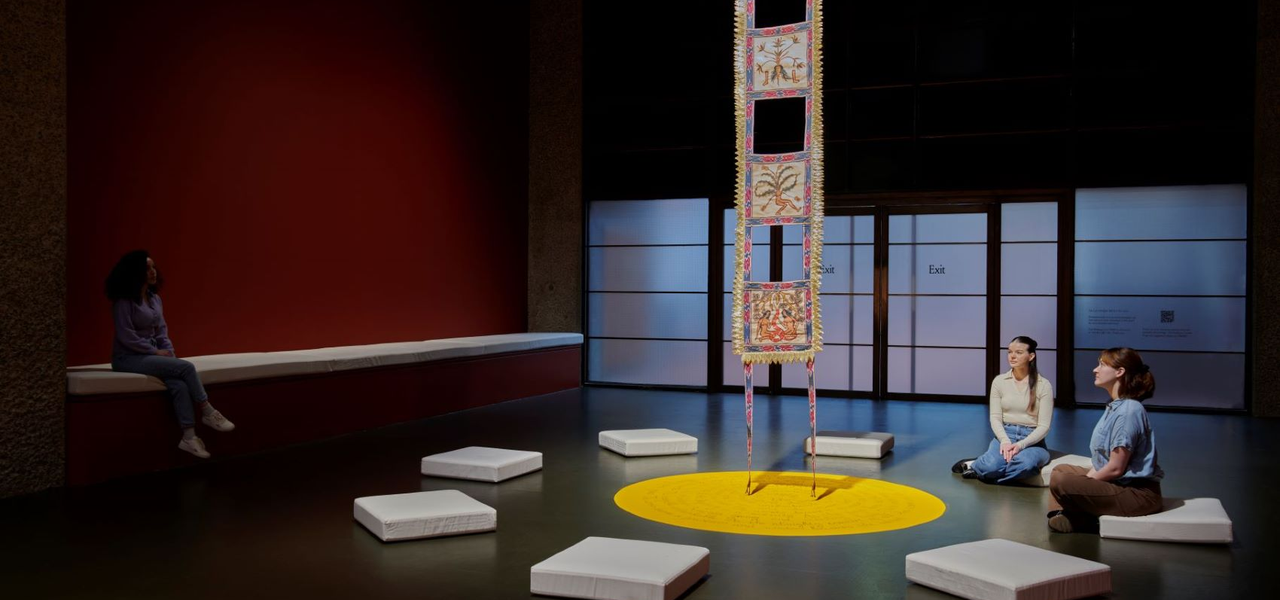We had the pleasure of interviewing Eleni Markopoulioti (MAAB, 2010), Senior Philanthropy Manager at the Barbican. Eleni raises funds for all the art forms the Barbican supports, from visual arts to fashion and classical music. Prior to this role, she spent six years at the Royal Institution as Major Gifts and Patron Manager, where she developed the individual giving strategy. She has also worked as Client and Business Development Director at the art finance start-up Right Capital, while teaching on the MA in Art Business and leading the Art as an Alternative Investment course at Sotheby’s Institute of Art. Earlier in her career, Eleni worked with various artist studios and served as Communications Director for the artworld start-up Fabulous Noble. In addition to her MA from Sotheby’s Institute, she holds an MA in Art History from UCL.

Can you tell us about your career journey since completing your Master’s at Sotheby’s Institute of Art, and how it led you to your current role at the Barbican?
After completing my MA in Art Business in 2010 and an internship at Sotheby’s in London, I quickly realised that what I was mostly interested in within the art world were the people who drive it forward, so I chose to focus on relationship management roles. I’ve always been a bit of a risk taker and went freelance as soon as I finished my internship, but with hard work, referrals, and some luck, one project led to another!
At the start of my career, I also did quite a bit of writing, which was a great way to meet different galleries, collectors, and artists, and to build my network. After a few years working mainly with artists and studios, I moved into art finance, where my knowledge of collection management systems helped me get the job. I learned so much there. While there’s always uncertainty in start-ups, you get exposed to all areas of the business, and that’s where I really developed my client relationship management skills.
During that time, I was also a TA for the MA in Art Business at Sotheby’s London and ran my own online course, Art as Alternative Investment. It was extremely fulfilling and, to be honest, teaching is probably the hardest and most rewarding thing I’ve ever done.
After about a decade working in the art market, I decided I wanted to do something with more social purpose and impact. I looked at my skill set and made the move into philanthropy. Interestingly, I’m still speaking to the same people I was before- collectors, art dealers, artists- just from a different angle. I spent six years at the Royal Institution really honing my fundraising skills, focusing on individuals, and I’ve now been at the Barbican for over a year.
What do you enjoy most about working in development and fundraising within a major cultural institution? Are there any particular projects or campaigns you've worked on that you’re especially proud of?
Seeing the direct impact I can make by bringing in a donor gift. In the current arts climate, gifts from philanthropists can make a huge difference: they can be the reason a public art commission gets made or not, or why a school that couldn’t afford to otherwise gets access to free arts programming. Being able to support wonderful artists from across the globe and getting insight into what they are planning for their exhibitions is also a real privilege. After curators, fundraisers tend to be the next to know, since we need to raise funds a few years out of the planned exhibition date. Most recently, I was extremely proud to be part of the team that helped make the Citra Sasmita exhibition at the Barbican a reality. This was Citra’s first institutional show in the UK and being able to support the creation of all new work, and for the exhibition to be free to enter, is something that I will always remember.
What advice would you give to students or recent graduates who are interested in pursuing a career in arts development or cultural philanthropy?
Go for it! It is an extremely rewarding sector that gives you a sense of purpose and helps open up the artworld to more people from different backgrounds, whether they are artists or audiences. While there are a handful of courses out there, it is not a sector that requires an MA in philanthropy. The best first step is to take on a junior role or internship in either a development department at a cultural non-for-profit, or a client development role in a gallery, auction house, or art consultancy. Good communication and writing skills are always high on the list for fundraisers, so working on how you communicate a story is a must.

Citra Sasmita Into Eternal Land Installation view 2025 (c) Jo Underhill and Barbican

